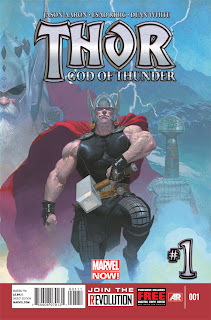(p) Ale Garza
"The Origin of Wonder Girl" has been my favorite arc of Teen Titans so far, mostly because it's the first story to actually resemble a 'putting the team together' aesthetic. While this should have happened in the first...you know...arc...it didn't because it was constantly being overshadowed by N.O.W.H.E.R.E. and the perceived deep integration with Superboy. Now, readers are finally getting some back story on the members of the Teen Titans, starting with Wonder Girl and the Silent Armor.
Last month, I explained how much I enjoyed Fabian Nicieza's writing for Teen Titans #13 and that if things kept going the way they were, TT could really grow into one of DC's best series. And while last issue took two steps forward, TT#14 takes one step back by moving Nicieza from sole scripting duties to being a co-writer with Scott Lobdell. It's a little frustrating to see Lobdell's spin on an arc that I've loved up to this point. Thankfully, it seems Nicieza put the nix on frequent thought balloons and stiff inner dialogue, though, so it's not nearly as painful to read as some of Lobdell's earlier issues.
A large chunk of Teen Titans #14 is focused on the team members themselves, which is a far cry from Lobdell's plot-only writing style. Solstice gets a visit from a mysterious phantom-esque character named Lance who claims to be able to alter metagenes and help Kiran regain her human appearance. I found myself wondering if this was Kurt Lance from Team 7, then a small editors note mentioned I should check out Birds of Prey for some insight into Lance's identity. Meanwhile, Red Robin and Superboy have to accept that Wonder Girl is going to live with the Silent Armor, something that casts a pall across the three of them, while the rest of the team jokes about their sour attitudes.
The final pages of the issue lead directly into next month's "Death of the Family" tie-in issue. Teen Titans is slowly, but surely, getting better. N.O.W.H.E.R.E., Harvest, and "The Culling" were all meant to be factors that would add to the Teen Titans mythology and lend meaning to the creation of the team. Instead, Lobdell botched the entire storyline early on, never fixed it, and now has to dig his way up toward a better book. It's working, but each month I find myself worrying that the title will dip back to it's former platitudes.
GRADE
7.5/10































